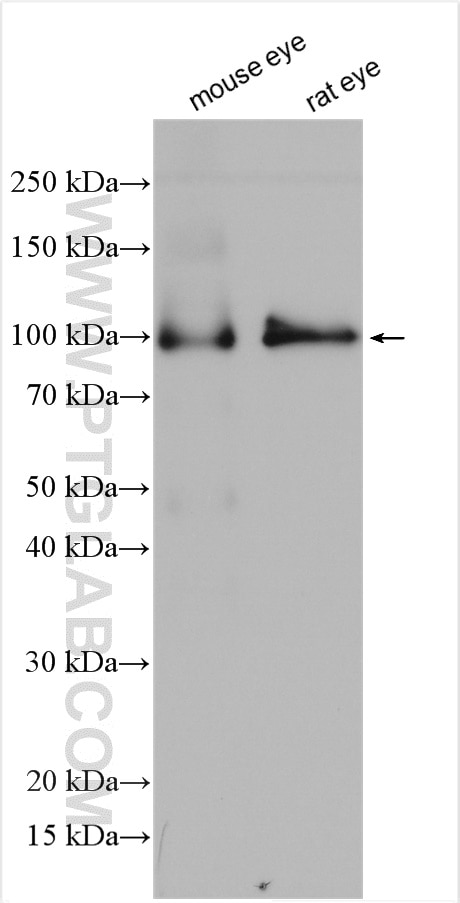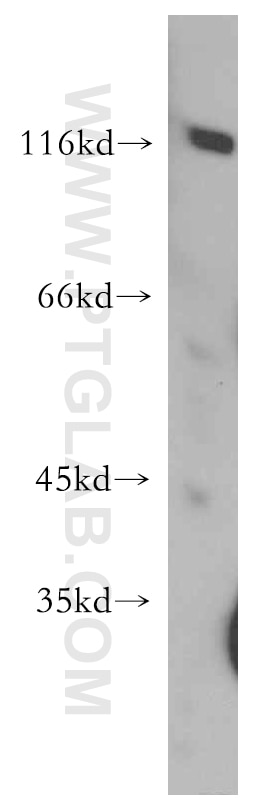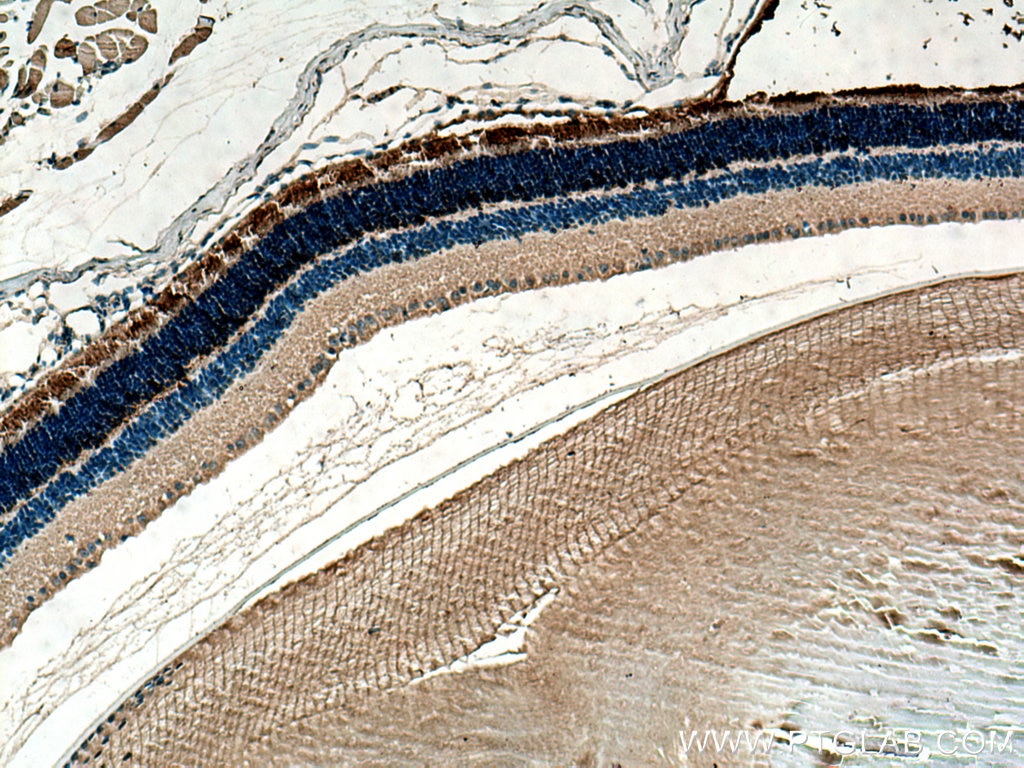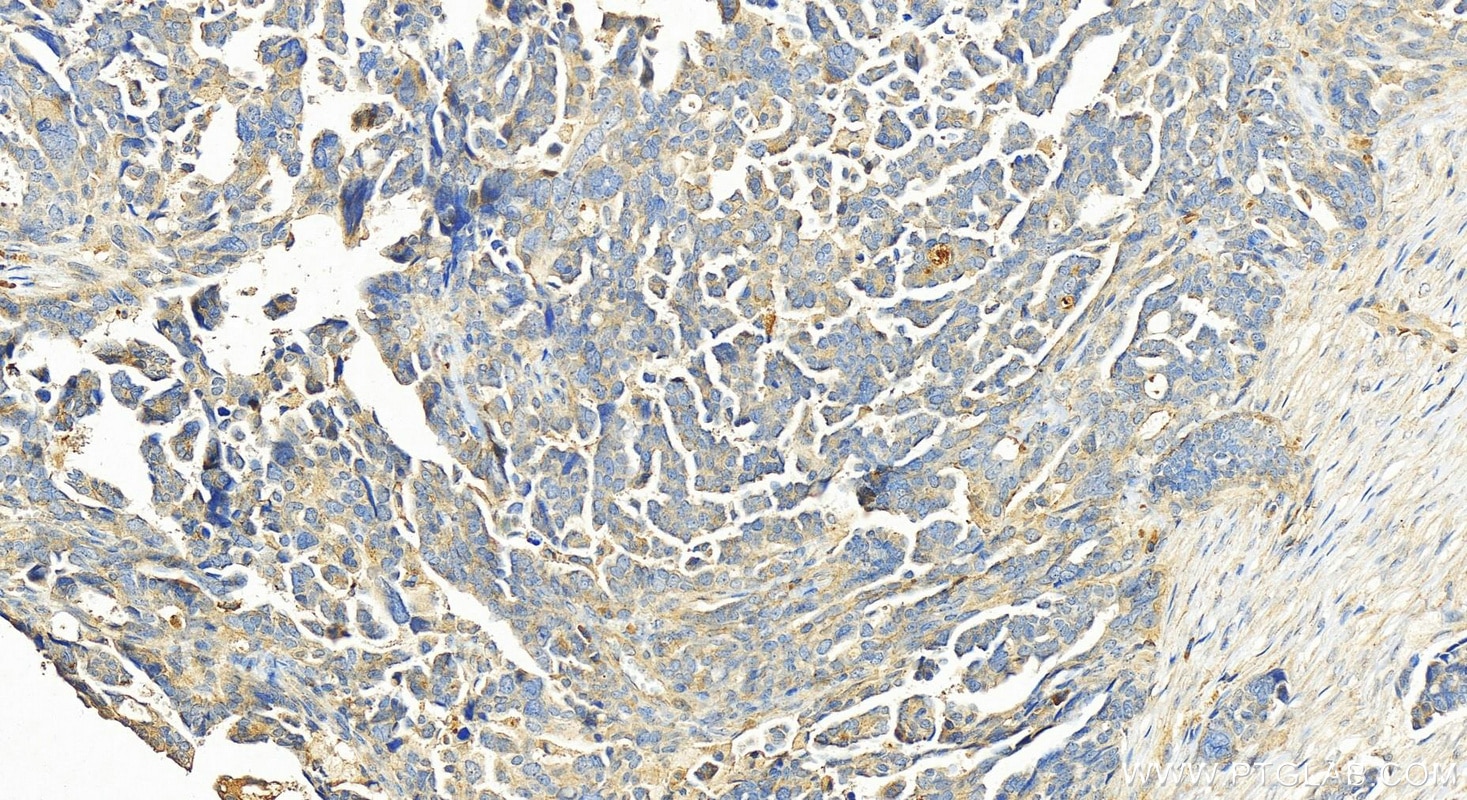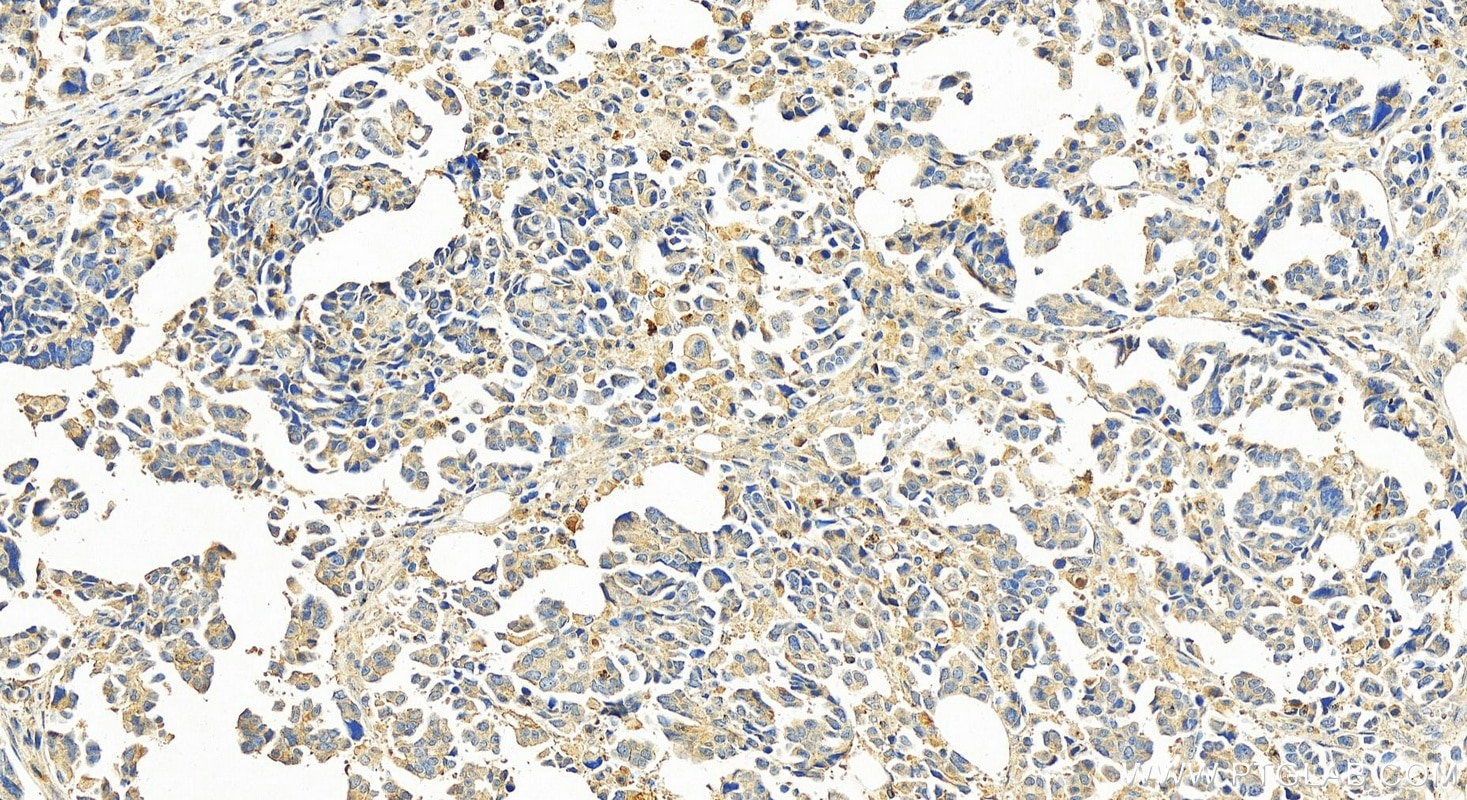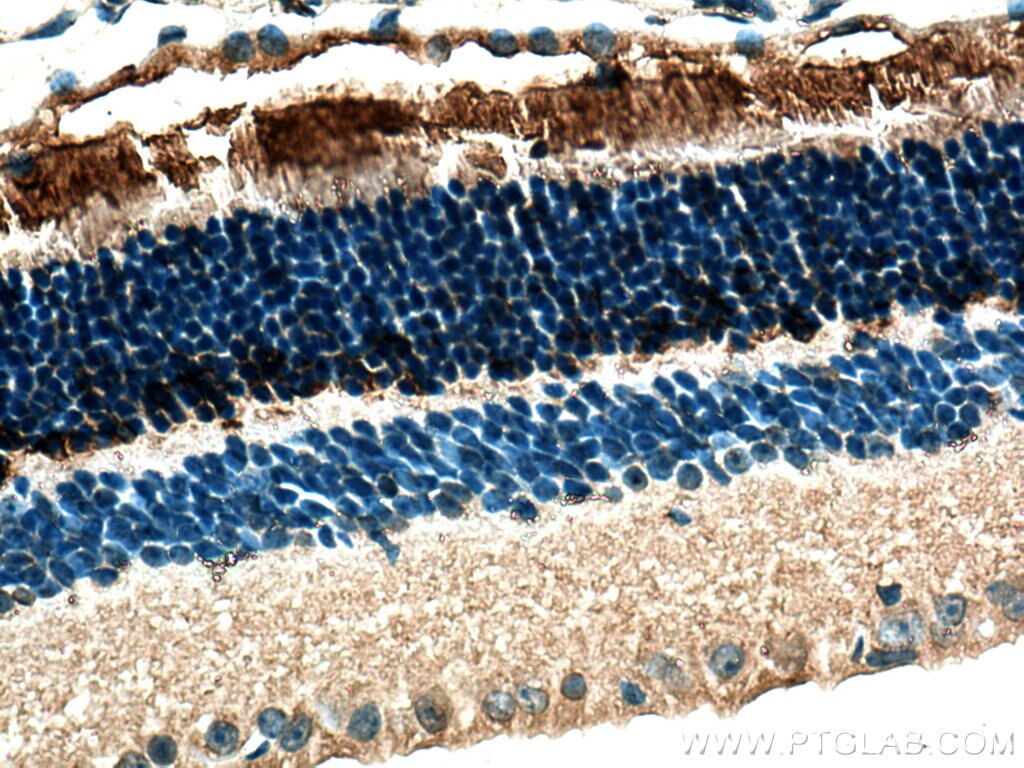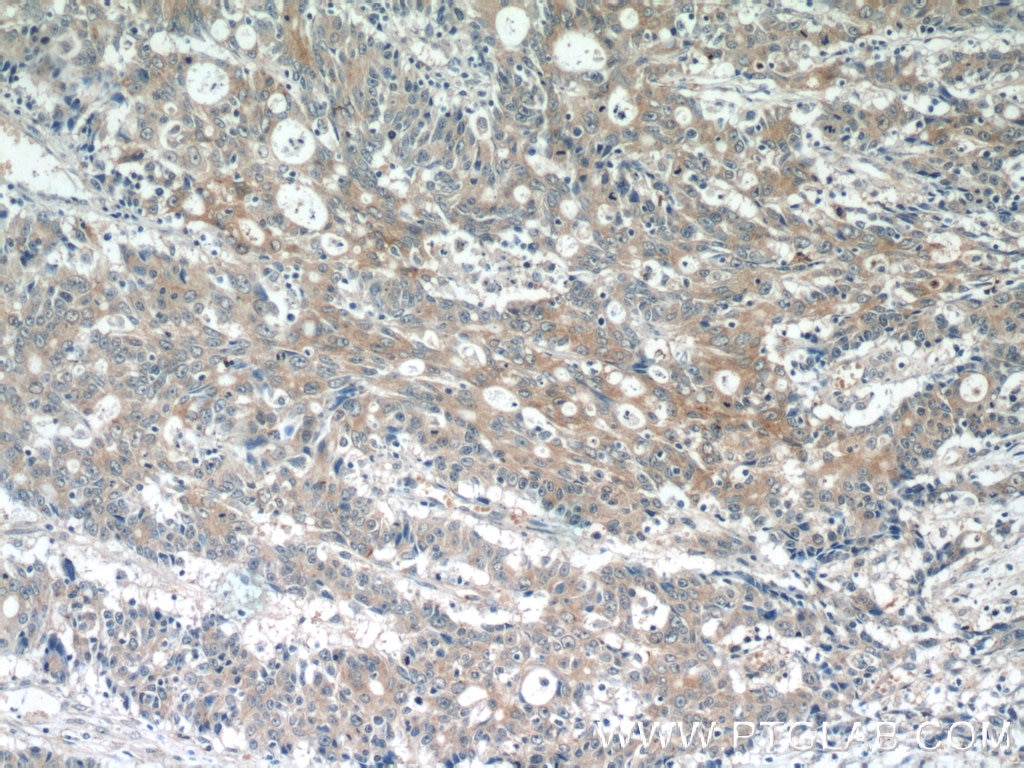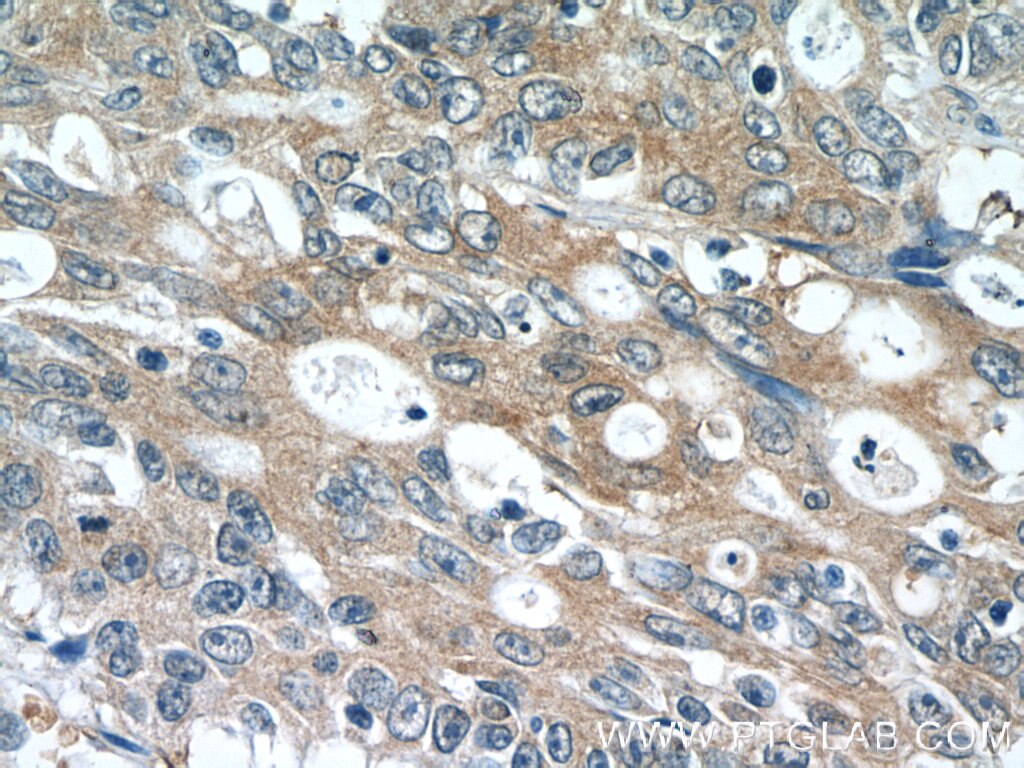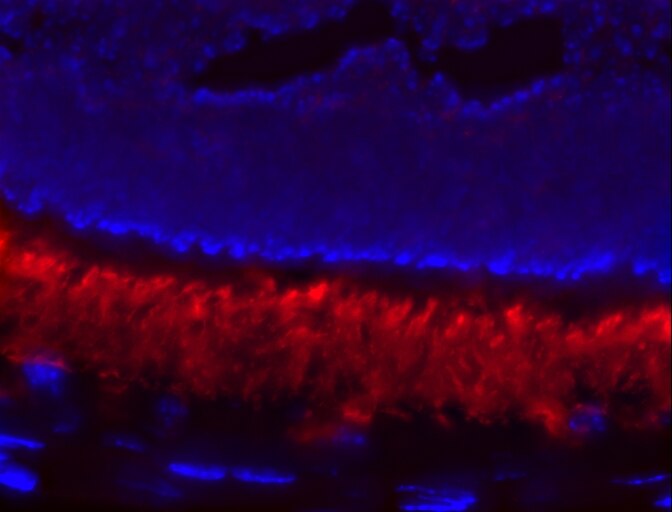PDE6A Polyklonaler Antikörper
PDE6A Polyklonal Antikörper für WB, IHC, IF, ELISA
Wirt / Isotyp
Kaninchen / IgG
Getestete Reaktivität
human, Maus, Ratte
Anwendung
WB, IHC, IF, ELISA
Konjugation
Unkonjugiert
Kat-Nr. : 21200-1-AP
Synonyme
Geprüfte Anwendungen
| Erfolgreiche Detektion in WB | Maus-Augengewebe, humanes Hirngewebe, Ratten-Augengewebe |
| Erfolgreiche Detektion in IHC | Maus-Augengewebe, humanes Kolonkarzinomgewebe Hinweis: Antigendemaskierung mit TE-Puffer pH 9,0 empfohlen. (*) Wahlweise kann die Antigendemaskierung auch mit Citratpuffer pH 6,0 erfolgen. |
| Erfolgreiche Detektion in IF | Retina-Gewebe |
Empfohlene Verdünnung
| Anwendung | Verdünnung |
|---|---|
| Western Blot (WB) | WB : 1:1000-1:6000 |
| Immunhistochemie (IHC) | IHC : 1:250-1:1000 |
| Immunfluoreszenz (IF) | IF : 1:50-1:200 |
| It is recommended that this reagent should be titrated in each testing system to obtain optimal results. | |
| Sample-dependent, check data in validation data gallery | |
Veröffentlichte Anwendungen
| WB | See 6 publications below |
| IHC | See 1 publications below |
| IF | See 1 publications below |
Produktinformation
21200-1-AP bindet in WB, IHC, IF, ELISA PDE6A und zeigt Reaktivität mit human, Maus, Ratten
| Getestete Reaktivität | human, Maus, Ratte |
| In Publikationen genannte Reaktivität | Maus, Ratte |
| Wirt / Isotyp | Kaninchen / IgG |
| Klonalität | Polyklonal |
| Typ | Antikörper |
| Immunogen | PDE6A fusion protein Ag15562 |
| Vollständiger Name | phosphodiesterase 6A, cGMP-specific, rod, alpha |
| Berechnetes Molekulargewicht | 860 aa, 100 kDa |
| Beobachtetes Molekulargewicht | 100-110 kDa |
| GenBank-Zugangsnummer | BC035909 |
| Gene symbol | PDE6A |
| Gene ID (NCBI) | 5145 |
| Konjugation | Unkonjugiert |
| Form | Liquid |
| Reinigungsmethode | Antigen-Affinitätsreinigung |
| Lagerungspuffer | PBS with 0.02% sodium azide and 50% glycerol |
| Lagerungsbedingungen | Bei -20°C lagern. Nach dem Versand ein Jahr lang stabil Aliquotieren ist bei -20oC Lagerung nicht notwendig. 20ul Größen enthalten 0,1% BSA. |
Hintergrundinformationen
PDE6A(Rod cGMP-specific 3',5'-cyclic phosphodiesterase subunit alpha) is also named as GMP-PDE alpha, PDE V-B1, PDEA and belongs to the cyclic nucleotide phosphodiesterase family. PDE6A contains an open reading frame capable of coding for a polypeptide of 859 amino acids and about 100 kDa. It is a subunit of a key phototransduction enzyme which participates in processes of transmission and amplification of the visual signal. The expression of PDE6 alpha in retina is essential for normal expression of PDE6 beta and PDE6 gama.
Protokolle
| PRODUKTSPEZIFISCHE PROTOKOLLE | |
|---|---|
| WB protocol for PDE6A antibody 21200-1-AP | Protokoll herunterladen |
| IHC protocol for PDE6A antibody 21200-1-AP | Protokoll herunterladenl |
| STANDARD-PROTOKOLLE | |
|---|---|
| Klicken Sie hier, um unsere Standardprotokolle anzuzeigen |
Publikationen
| Species | Application | Title |
|---|---|---|
Proc Natl Acad Sci U S A Accumulation of non-outer segment proteins in the outer segment underlies photoreceptor degeneration in Bardet-Biedl syndrome. | ||
J Biol Chem The myosin-tail homology domain of centrosomal protein 290 is essential for protein confinement between the inner and outer segments in photoreceptors. | ||
Dev Biol Luteinizing hormone signaling phosphorylates and activates the cyclic GMP phosphodiesterase PDE5 in mouse ovarian follicles, contributing an additional component to the hormonally induced decrease in cyclic GMP that reinitiates meiosis. | ||
Exp Eye Res Characterization of lncRNA and mRNA profiles in ciliary body in experimental myopia |
